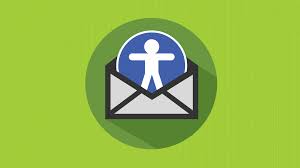Introduction
Email validation is a crucial step in ensuring the accuracy and deliverability of email communications. However, there may be instances where you need to work with email addresses without validation, either due to specific requirements or limitations. In this comprehensive guide, we will delve into the concept of email without validation, discuss the pros and cons, and provide insights into how to handle unvalidated email addresses responsibly. Whether you are a developer, a marketer, or a business owner, understanding the implications of email without validation is essential to make informed decisions and maintain the integrity of your email communications.
Understanding Email Validation
Email validation refers to the process of verifying the authenticity and deliverability of an email address. It involves checking the syntax, domain existence, and mailbox availability to ensure that the email address is valid and capable of receiving messages. Email validation helps prevent bouncebacks, improve deliverability rates, and maintain a clean and engaged subscriber list.
The Pros of Email Validation
1. Enhanced Deliverability: Validating email addresses ensures that your messages reach the intended recipients' inboxes, reducing the chances of bouncing or being flagged as spam.
2. Improved Data Quality: Email validation helps maintain a clean and accurate database by identifying and removing invalid or mistyped email addresses. This ensures that your marketing efforts are targeted and effective.
3. Reduced Spam Complaints: Validating email addresses helps prevent sending emails to non-existent or inactive accounts, reducing the likelihood of spam complaints and maintaining a positive sender reputation.
The Cons of Email Without Validation
1. Risk of Bouncebacks: Email addresses without validation may lead to a higher bounce rate, as there is no guarantee that the addresses are valid or active.
2. Lower Deliverability Rates: Sending emails to unvalidated addresses increases the likelihood of messages being flagged as spam or blocked by email service providers, resulting in lower deliverability rates.
3. Poor Data Quality: Working with unvalidated email addresses may result in inaccurate and outdated subscriber data, impacting the effectiveness of your email marketing campaigns.
Best Practices for Handling Unvalidated Email Addresses
1. Segment and Monitor: If you must work with unvalidated email addresses, consider segmenting them separately from validated addresses. Monitor the performance metrics, such as bounce rates and engagement, to identify any negative impact on your overall email deliverability.
2. Implement Double Opt-in: Utilize double opt-in processes for subscribers providing unvalidated email addresses. This helps ensure that the email addresses are valid and that subscribers have given explicit consent to receive communications.
3. Regular List Cleaning: Regularly clean your email lists to remove inactive or unengaged subscribers. This helps maintain data quality and improve overall deliverability.
Conclusion
Email without validation can present both advantages and challenges. While email validation is essential for optimal deliverability and data quality, there may be situations where working with unvalidated email addresses is necessary. By following best practices and monitoring performance, you can mitigate the risks associated with email without validation and maintain effective email communications.



